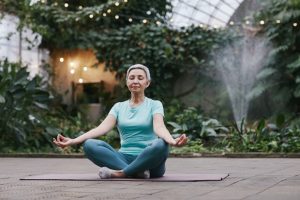Improve Female Sexual Dysfunction with Mindfulness
By John M. de Castro, Ph.D.
“No amount of talking about sex is going to diminish the mystery of the experience of it. Sex is Sacred, Not Secret.” ― Christine Laplante
Sex is a very important aspect of life. Problems with sex are very common and have negative consequences for relationships. While research suggests that sexual dysfunction is common, it is a topic that many people are hesitant or embarrassed to discuss. Women suffer from sexual dysfunction more than men with 43% of women and 31% of men reporting some degree of difficulty. Hence, sex has major impacts on people’s lives and relationships. Greater research attention to sexual activity and sexual satisfaction and the well-being of the individual is warranted.
Mindfulness trainings have been found to improve relationships and to be useful in treating sexual problems. In today’s Research News article “Behavioral Therapies for Treating Female Sexual Dysfunctions: A State-of-the-Art Review.” (See summary below or view the full text of the study at: https://www.ncbi.nlm.nih.gov/pmc/articles/PMC9144766/ ) Mestre-Bach and colleagues review and summarize the published research studies on the effectiveness of psychotherapeutic for the treatment of female sexual dysfunction disorders including female orgasmic disorder, female sexual interest/arousal disorder, and genito-pelvic pain/penetration disorder.
They report that the published research demonstrate that psychotherapeutic treatments are effective for female sexual dysfunctions. But Cognitive Behavioral Therapy (CBT) and Mindfulness-Based Cognitive Therapy (MBCT) have been shown to be especially effective. Women with these disorders appear to helped by mindfulness and cognitive therapy allowing for more satisfying sexual relations.
“We are the embodiment of the Love behind and beyond lovemaking.” – Michael Mirdad
CMCS – Center for Mindfulness and Contemplative Studies
This and other Contemplative Studies posts are also available on Twitter @MindfulResearch
Study Summary
Mestre-Bach G, Blycker GR, Potenza MN. Behavioral Therapies for Treating Female Sexual Dysfunctions: A State-of-the-Art Review. J Clin Med. 2022 May 16;11(10):2794. doi: 10.3390/jcm11102794. PMID: 35628920; PMCID: PMC9144766.
Abstract
Many possible factors impact sexual wellbeing for women across the lifespan, and holistic approaches are being utilized to promote health and to address sexual concerns. Female sexual dysfunction disorders, including female orgasmic disorder, female sexual interest/arousal disorder and genito-pelvic pain/penetration disorder, negatively impact quality of life for many women. To reduce distress and improve sexual functioning, numerous behavioral therapies have been tested to date. Here, we present a state-of-the-art review of behavioral therapies for female sexual dysfunction disorders, focusing on empirically validated approaches. Multiple psychotherapies have varying degrees of support, with cognitive-behavioral and mindfulness-based therapies arguably having the most empirical support. Nonetheless, several limitations exist of the studies conducted to date, including the frequent grouping together of multiple types of sexual dysfunctions in randomized clinical trials. Thus, additional research is needed to advance treatment development for female sexual dysfunctions and to promote female sexual health.
https://www.ncbi.nlm.nih.gov/pmc/articles/PMC9144766/



